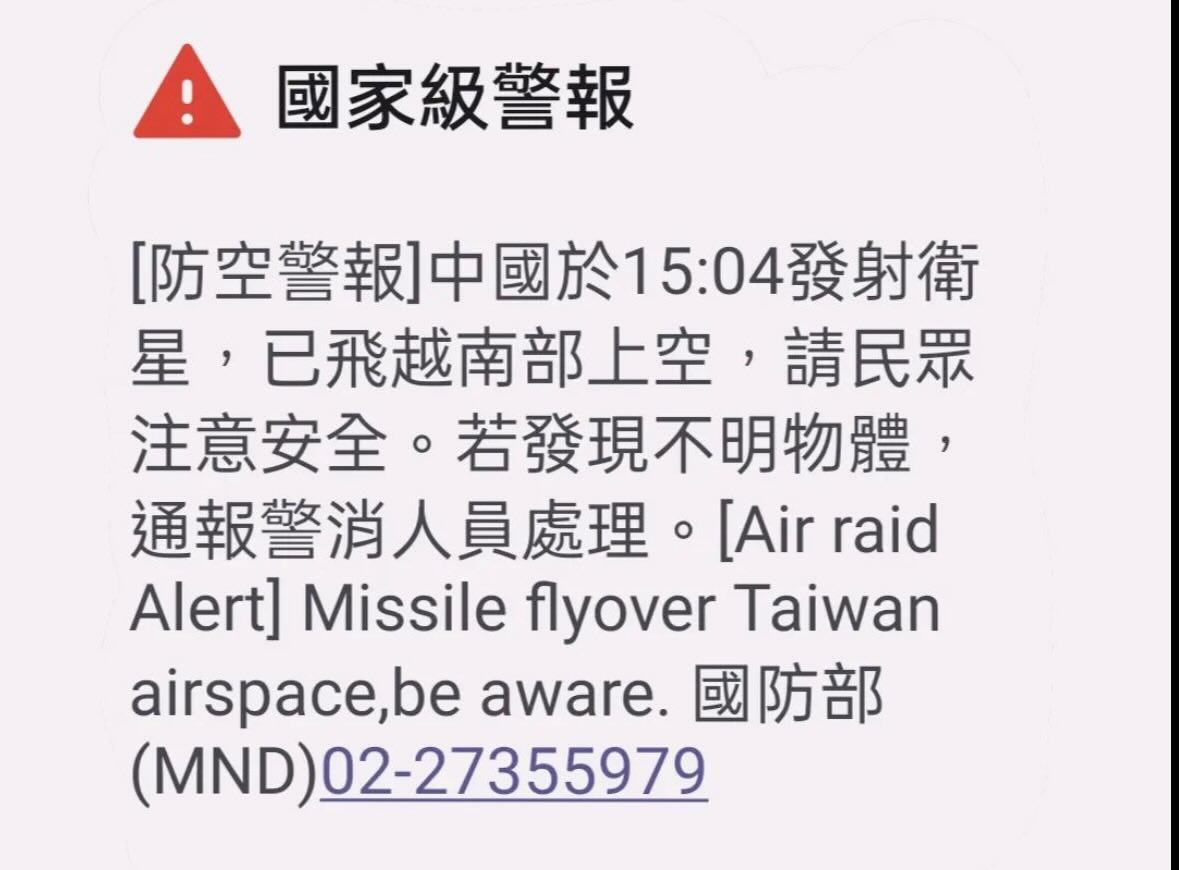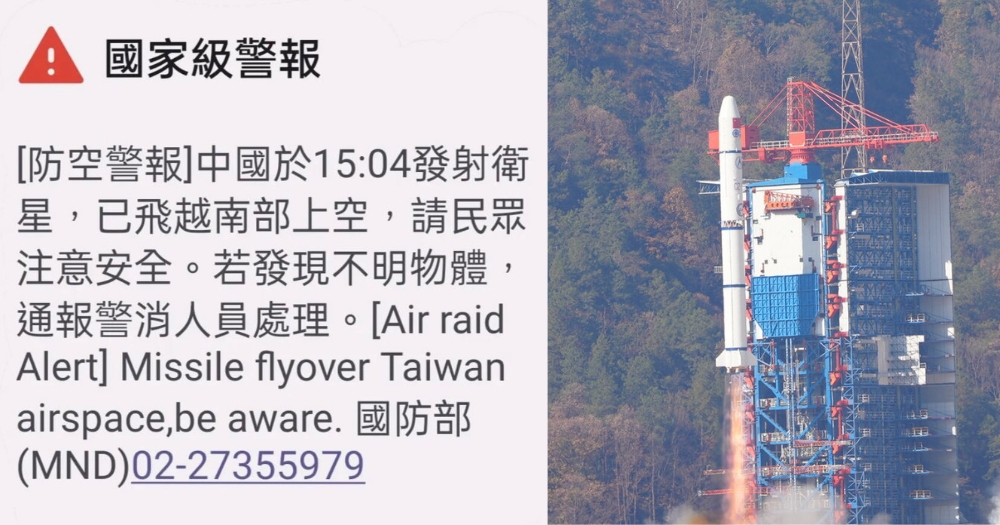Taiwan issued a nationwide emergency alert on Jan. 9, 2024 afternoon moments after a Chinese satellite was launched, Reuters reported.
It was sent via SMS in Mandarin and English to mobile phones in Taiwan, informing the Taiwanese public that China had launched a satellite at 3:04pm on the same day.
Taipei Times reported that this was the first time a nationwide alert was sent out over the launch of a Chinese satellite.
Satellite used to study outer space
The SMS alert, which was seen by Mothership, added in Mandarin that China launched the satellite at 3:04pm and it had flown over the southern airspace.
It also advised the public to stay safe and to notify the authorities should they come across unknown objects.
Apologised for mistranslation
However, the English portion of the alert was slightly more alarming: "[Air raid Alert] Missile flyover Taiwan airspace, be aware."
Nikkei Asia reported that the Ministry of National Defense of Taiwan has since apologised to the public for the "oversight", where they wrongly referred to the launched satellite as a "missile" in English.
 Image courtesy of V.
Image courtesy of V.
The alert was sent while Taiwan's Minister of Foreign Affairs Joseph Wu was giving a briefing in Taipei to foreign media ahead of the presidential election on Jan. 13, 2024.
Wu assured the media that that it was indeed a satellite, and added that the alert was issued to the public so that they would be mindful of "debris" falling from the launch.
Satellite launched at "sensitive" time
He noted that the Chinese would launch their satellites every once in a while, but remarked that the Jan. 9 launch was at a "sensitive moment of our election".
Reuters quoted Wu telling the media:
"All these kinds of tactics are classified as grey-zone activities, (and) continue to remind the people here in Taiwan that there is a danger of war between Taiwan and China."
"Grey zone" tactics refer to the use of non-military means to deploy aggressive and coercive actions against an adversary over a prolonged period to weaken them.
Near-daily military presence around Taiwan
Taiwan's current vice president Lai Ching-te has accused Beijing of using "all means" to interfere with this weekend's presidential election, AFP reported.
AFP further reported that China has maintained a near-daily military presence around Taiwan, sending in fighter jets, naval vessels and drones.
Taiwan's defence ministry has also reported seeing balloons flying near or over Taiwan since December 2023, some of which were spotted near major air bases, Reuters reported.
The United States shot down a Chinese balloon on Feb. 4, 2023, claiming that it was used for spying. Beijing, however, denied this and maintained that the balloon was a civilian climate research vehicle.
Wu echoed Taiwan's defence ministry, which said on Jan. 6 that the balloons were part of China's "grey zone" tactics against Taiwan "in an attempt to use cognitive warfare to affect the morale of our people".
The Ministry of National Defense of Taiwan urged the public to remain calm in the face of Chinese cognitive warfare and refrain from being influenced, Focus Taiwan reported.
Satellite used to study outer space
After the Jan. 9 satellite launch, China's state-run Xinhua news agency reported on the same day that the Einstein Probe (EP) satellite was successfully launched from the Xichang Satellite Launch Center in Sichuan, China.
Xinhua further reported that the EP uses new X-ray detection technology to "observe mysterious transient phenomena in the universe which flicker like fireworks, trying to reveal more about this violent and little-known side of the cosmos".
The European Space Agency and Germany's Max Planck Institute for Extraterrestrial Physics are also collaborating with the Chinese Academy of Sciences (CAS) on the EP's mission.

Top image courtesy of V and from European Space Agency website
If you like what you read, follow us on Facebook, Instagram, Twitter and Telegram to get the latest updates.



